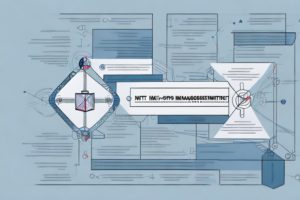What is security control cost-benefit analysis in RMF?

A security control system with a cost-benefit analysis chart
In today’s world, security is of utmost importance. The Risk Management Framework (RMF) is used to manage security risks in various organizations. One of the essential processes in RMF is security control cost-benefit analysis. It is a process that involves identifying and analyzing the costs and benefits of implementing security controls. In this article, we will take an in-depth look at security control cost-benefit analysis in RMF.
Understanding the Risk Management Framework (RMF)
The Risk Management Framework (RMF) is a process designed to ensure that security risks are managed properly. It is a six-step process that is used to guide organizations through the risk management process. These six steps are:
- Categorize information system and data by FIPS 199 impact level
- Select security controls for information systems and data
- Implement security controls in information systems and data
- Assess the effectiveness of security controls in information systems and data
- Authorize information systems and data
- Monitor security controls in information systems and data
The RMF is a flexible framework that can be applied to a wide range of information systems and data. It is designed to be adaptable to different types of organizations, including government agencies, private companies, and non-profit organizations. The framework can be customized to meet the specific needs of each organization, ensuring that security risks are managed effectively.
One of the key benefits of the RMF is that it provides a structured approach to risk management. By following the six-step process, organizations can identify potential security risks, implement appropriate security controls, and monitor the effectiveness of those controls over time. This helps to ensure that security risks are managed in a consistent and effective manner, reducing the likelihood of security breaches and other security incidents.
The Importance of Security Control Cost-Benefit Analysis
Security control cost-benefit analysis is an essential process in RMF. It allows organizations to determine the effectiveness and efficiency of implementing security controls. It is important because it helps organizations make informed decisions about whether to invest resources in certain security controls or not. Moreover, it helps ensure that security investments are being made in a way that maximizes their effectiveness and efficiency.
One of the key benefits of conducting a security control cost-benefit analysis is that it helps organizations prioritize their security investments. By analyzing the costs and benefits of different security controls, organizations can identify which controls are most critical to their security posture and allocate resources accordingly. This ensures that limited resources are being used in the most effective way possible.
Another important aspect of security control cost-benefit analysis is that it helps organizations stay up-to-date with the latest security threats and vulnerabilities. By regularly analyzing the costs and benefits of different security controls, organizations can identify emerging threats and adjust their security investments accordingly. This helps ensure that organizations are always prepared to defend against the latest security threats.
The Goals of Security Control Cost-Benefit Analysis
The primary goal of security control cost-benefit analysis is to identify and analyze the costs and benefits associated with implementing security controls. The analysis helps organizations make informed decisions about which security controls to implement and how to prioritize their implementation. At the same time, it can help ensure that security controls are implemented in a cost-effective manner and that resources are allocated effectively.
Another important goal of security control cost-benefit analysis is to assess the potential risks and threats that an organization may face. By identifying these risks, organizations can determine which security controls are necessary to mitigate them. This analysis can also help organizations understand the potential impact of a security breach and the costs associated with remediation. By conducting a thorough cost-benefit analysis, organizations can make informed decisions about their security posture and ensure that they are adequately protected against potential threats.
Factors to Consider in Security Control Cost-Benefit Analysis
Several factors should be considered when conducting security control cost-benefit analysis in RMF. These factors include:
- The potential impact of security incidents on organizational mission and objectives.
- The probability of security incidents occurring.
- The cost of implementing and maintaining security controls.
- The expected benefits of implementing security controls.
- The availability of resources for implementing security controls.
- The legal and regulatory compliance requirements of the organization.
Another important factor to consider in security control cost-benefit analysis is the level of risk tolerance of the organization. Some organizations may be willing to accept a higher level of risk in order to save costs, while others may prioritize security over cost savings.
It is also important to consider the potential impact of security controls on user experience and productivity. In some cases, implementing strict security controls may hinder user productivity and lead to frustration, which could ultimately impact the organization’s bottom line.
The Role of Cost in Security Control Cost-Benefit Analysis
The cost of implementing and maintaining security controls is a crucial factor in security control cost-benefit analysis. It includes both direct costs (e.g., salaries, hardware, and software) and indirect costs (e.g., training and support expenses). The analysis helps organizations determine the cost-effectiveness of implementing security controls. While it may be tempting to cut costs, it is important to ensure that security controls are implemented in a way that delivers long-term benefits.
One important consideration in cost-benefit analysis is the potential cost of a security breach. The cost of a breach can include not only financial losses, but also damage to an organization’s reputation and loss of customer trust. By investing in effective security controls, organizations can reduce the likelihood and impact of a breach, ultimately saving money in the long run. It is important to weigh the potential costs of a breach against the cost of implementing and maintaining security controls when making decisions about security investments.
The Role of Benefit in Security Control Cost-Benefit Analysis
The benefits of implementing security controls are a crucial factor in security control cost-benefit analysis. Benefits include reducing the probability of security incidents, minimizing the impact of security incidents, and meeting legal and regulatory compliance requirements. The analysis helps organizations assess the benefits of implementing security controls and identify which controls will have the greatest impact on the organization.
One important benefit of implementing security controls is the protection of sensitive data. With the increasing amount of data breaches and cyber attacks, it is essential for organizations to protect their sensitive information from unauthorized access. Security controls such as encryption, access controls, and firewalls can help prevent data breaches and protect sensitive information.
Another benefit of implementing security controls is the improvement of overall business operations. Security controls can help identify and mitigate risks, which can lead to increased efficiency and productivity. For example, implementing security controls such as intrusion detection systems can help identify and prevent potential security incidents, which can save time and resources that would have been spent on incident response and recovery.
Methods for Conducting Security Control Cost-Benefit Analysis
Several methods can be used to conduct security control cost-benefit analysis. These methods include qualitative analysis, quantitative analysis, and mixed-method analysis. Qualitative analysis involves assessing the costs and benefits of implementing security controls without assigning numerical values to them. Quantitative analysis involves assigning numerical values to the costs and benefits of implementing security controls. Mixed-method analysis involves using both qualitative and quantitative methods to assess the costs and benefits of implementing security controls.
It is important to note that the method chosen for conducting a security control cost-benefit analysis will depend on various factors such as the complexity of the security controls, the size of the organization, and the available resources. Additionally, it is crucial to involve all relevant stakeholders in the analysis process to ensure that all perspectives are considered and that the final decision is well-informed and supported by all parties involved.
Benefits and Limitations of Security Control Cost-Benefit Analysis
The benefits of security control cost-benefit analysis include:
- Helping organizations make informed decisions about security investments
- Ensuring that resources are allocated efficiently and effectively
- Maximizing the effectiveness and efficiency of security controls
However, there are also limitations to security control cost-benefit analysis. These limitations include:
- The difficulty of assigning numerical values to certain costs and benefits
- The unpredictability of security incidents
- The subjectivity of determining the potential impact of security incidents
Examples of Successful Security Control Cost-Benefit Analyses in RMF
Several organizations have successfully conducted security control cost-benefit analyses in RMF. For example, the Department of Defense (DoD) has used security control cost-benefit analysis to determine the most effective and efficient way to implement security controls in its information systems. Similarly, the National Institute of Standards and Technology (NIST) has used security control cost-benefit analysis to assess the cost-effectiveness of implementing various security controls.
Challenges in Conducting Security Control Cost-Benefit Analyses in RMF
There are several challenges to conducting security control cost-benefit analyses in RMF. These challenges include:
- The complexity of assessing the potential impact of security incidents
- The difficulty of quantifying certain costs and benefits
- The unpredictability of security incidents
- The subjectivity of determining the probability of security incidents occurring
- The limited availability of resources for implementing security controls
The Future of Security Control Cost-Benefit Analysis in RMF
Security control cost-benefit analysis will continue to be an essential process in RMF. As technology evolves and new security threats emerge, it is important for organizations to conduct regular security control cost-benefit analyses to ensure that their security investments are being made effectively. New methods for conducting cost-benefit analysis are also likely to emerge, which will help organizations make more informed decisions about security investments. Ultimately, the goal of security control cost-benefit analysis is to ensure that organizations can identify and implement the most effective and efficient security controls to manage risks and protect their assets.



